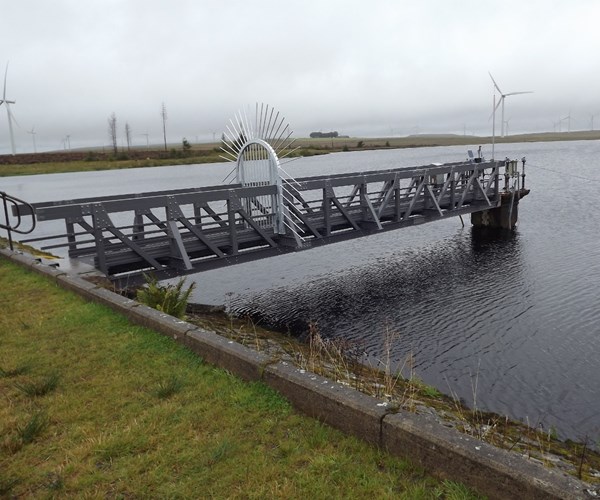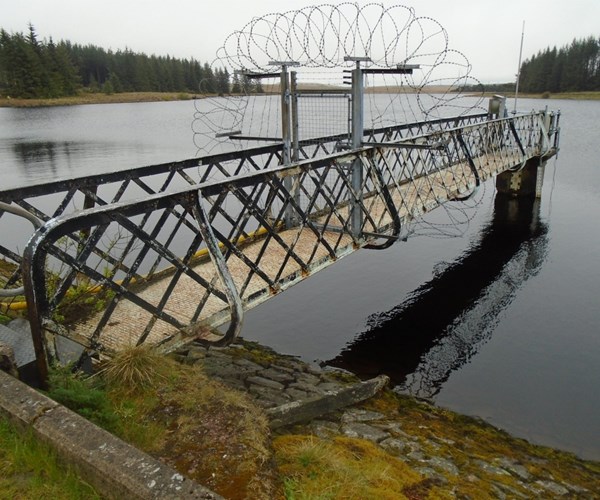Serving pultrusion customers in the digital age
Thanks to composites and robust engineering design, the life expectancy of two FRP footbridges in Scotland is expected to be more than 60 years.

A new footbridge in Craigendunton Reservoir in Scotland uses Strongwell’s pultruded FRP profiles (photo source: Strongwell).
I have a Twitter account but rarely tweet. I’m not alone – in fact, I recently found a blog entitled “Six tips for Twitter users with fewer than 25 followers” and thought, those are my people. Why do I bring this up? Although I rarely tweet, I follow those that do, including many in the composites industry. One is Strongwell (Bristol, VA, US), a recognized leader in fiber-reinforced polymer (FRP) pultrusion that is focused on a very wide array of end markets. Strongwell is diligent in regularly tweeting not only about its own news and case studies, but other interesting composites applications worldwide. I’ve learned to pay attention to these tweets, as they always lead to interesting projects where composites out-perform legacy materials.
One recent case study involves a Scottish project, headed by Strongwell’s European distributor Pipex px, where composites were the logical alternative to steel. Pipex px was contracted to supply and fabricate two FRP footbridges in Scotland: One is located in the Craigendunton Reservoir, which covers approximately 24 acres and provides drinking water as well as supporting a recreational trout fishery. The second bridge is located in the Loch Craig Reservoir, of 65 acres. Both footbridges serve as vital means of access to water control valves at each individual reservoir. Over the years, Scotland’s challenging environment caused corrosion and thus aesthetic and safety concerns to each of the original steel footbridges which were in place. The water and sewage provider wanted a cost effective and durable structural alternative to steel.

The previous steel footbridge was badly corroded (photo source: Strongwell)
Pipex px and an engineering firm worked together to design, fabricate, and install two almost identical bridges constructed entirely with FRP profiles. Upon completion, the Craigendunton Reservoir footbridge measured 45 ft long x 4 feet wide x 5 feet high. The Loch Craig Reservoir Bridge came in slightly shorter, measuring 40 feet long x 4 feet wide x 5 feet high. Pipex px assembled the bridges at its Glasgow facility for quality assurance and then disassembled them for delivery. Both bridges were built to ensure corrosion resistance and structural durability using Strongwell’s trademarked EXTREN structural tubes, angles, and plates. Strongwell SAFPLANK fiberglass planking with an epoxy, anti-skid surface was used as a long-lasting pedestrian flooring solution. Thanks to composites and robust engineering design, the life expectancy of both bridges is expected to be more than 60 years. That’s something to tweet about.
Related Content
-
Plant tour: Albany Engineered Composites, Rochester, N.H., U.S.
Efficient, high-quality, well-controlled composites manufacturing at volume is the mantra for this 3D weaving specialist.
-
Sulapac introduces Sulapac Flow 1.7 to replace PLA, ABS and PP in FDM, FGF
Available as filament and granules for extrusion, new wood composite matches properties yet is compostable, eliminates microplastics and reduces carbon footprint.
-
PEEK vs. PEKK vs. PAEK and continuous compression molding
Suppliers of thermoplastics and carbon fiber chime in regarding PEEK vs. PEKK, and now PAEK, as well as in-situ consolidation — the supply chain for thermoplastic tape composites continues to evolve.
















